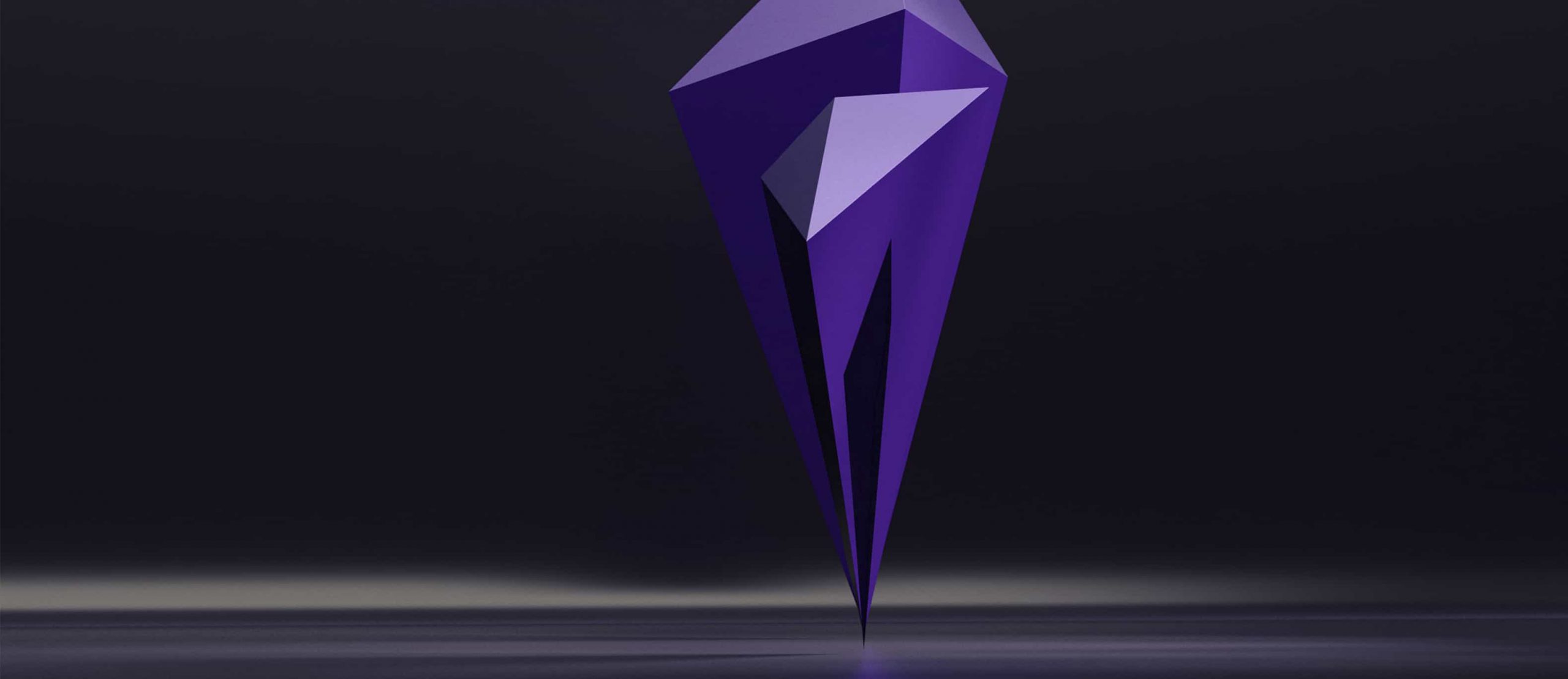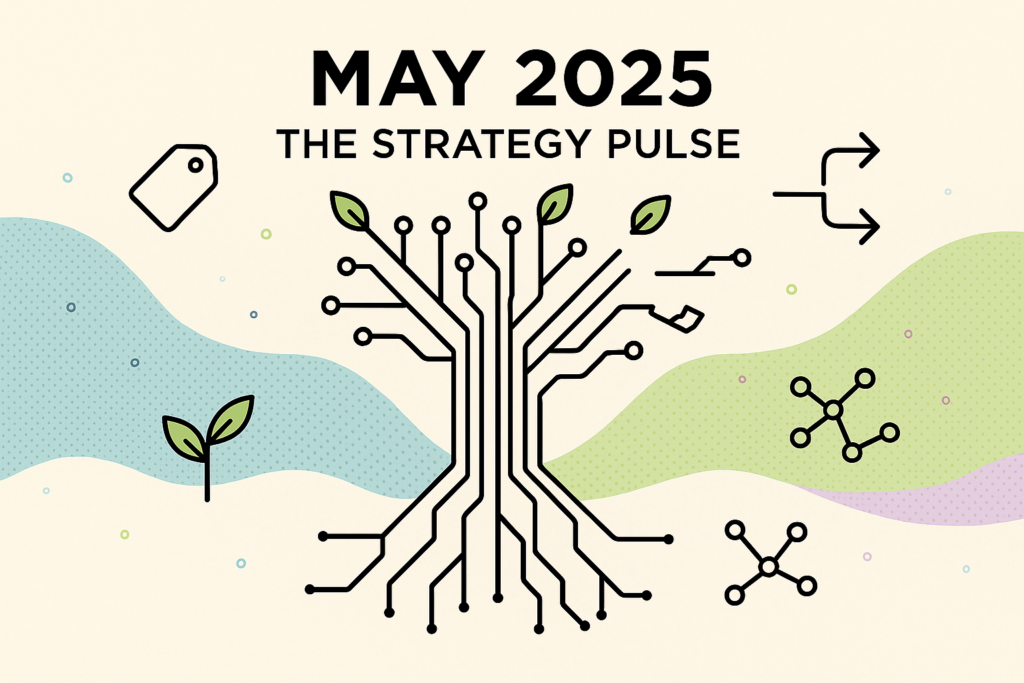Month: June 2023

Data Digest #7: Mind Readers And Extinct Actors
Data Digest #7: Mind Readers And Extinct Actors
June 27, 2023

The cogs of the data world are perpetually turning. Data never sleeps. Brace yourself for an exciting overview into some of the top data news stories that have been gracing our screens over the past month.
BBC: Using brain data to watch workers
Once upon a time in the not-too-distant past, the concept of being able to read somebody’s mind was nothing more than the plot of some cheesy dystopian movie; An entertaining prospect insofar as it remained ludicrously unrealistic. However, believe it or not, it seems to be veering closer and closer towards the realm of possibility.
According to the first ever ICO report on “neurodata”, workplaces could be monitoring employees’ brains in the next four to five years for “safety, productivity and recruitment” purposes. Scary as it sounds, what would this actually look like in practice, you may ask? Well, it’s probably not as invasive as you think. It would most likely involve using helmets or safety equipment worn by employees in high-risk environments to measure their attention and focus levels while on the job, in order to ensure optimal safety.
This report comes in the wake of the news that Elon Musk’s “neuralink” has won permission for human trials of its human brain computer implant, which is already worth £4 billion.
The report also suggests that schools could end up using wearable devices to track the brain activity of students, measuring their stress and concentration levels in the process. While some may welcome this development, others among us (mainly the ones who spent their chemistry lesson daydreaming and drooling over the Bunsen Burner) are simply relieved that we finished school as long ago as we did.
BBC: Warning firms may use brain data to watch workers
Sky News: AI could render actors obsolete
No industry is immune to the power of AI, and the acting world is no exception. Computer technology is already playing a significant role in Hollywood blockbusters: The Fast and Furious franchise spent an extra $50 million on CGI so that Paul Walker’s character could be included in their latest release, while Joe Russo, director of many a Marvel movie including Avengers: Infinity War, has stated that AI is democratising filmmaking, saying that it’s now possible to “have a rom-com starring you that’s 90 minutes long”.
Unsurprisingly, many professional actors aren’t exactly welcoming this development with open arms. Among sceptics is Laurence Bouvard, a smaller-scale voice actor who laments the fact that many actors end up in contracts that restrict the authority they have over their own work; Once their performances are out there, where they end up is out of their hands.
Bouvard explained to Sky News that certain technology companies have the power to use the work of actors without any repercussions. Her acting colleagues will frequently submit audio for auditions and later discover that very same audio being sampled in a different context. The legal framework surrounding acting performances and AI tech is not built to handle this issue; There’s a grey area that tech companies are exploiting to use the work of jobbing actors without their permission. AI is developing at a rapid rate and doesn’t look to be slowing down any time soon, so it’s inevitable that technology will continue to play an increasingly important role in the acting world, for better or for worse.
Sky News: AI could make actors in TV shows and blockbusters unnecessary, experts fear
BBC: AI helping to spot breast cancer
It’s no news to any of us that the NHS is weighed down by immense pressure at the moment. Now more than ever, exceedingly long waiting lists and staff shortages are crippling the NHS and holding health workers back from providing the immediate attention that many patients need. Particularly when it comes to cancer diagnosis and treatment, many patients are experiencing delays in receiving vital care.
In Scotland, one such dilemma is that more and more women are attending routine breast screenings, but the number of radiologists who can examine the results of those mammograms is dwindling. It goes without saying that this massively slows down the process of providing many patients with a diagnosis, and when it comes to disease discovery, time really is of the essence.
Well, it turns out that AI might just have the potential to come to the rescue. A trial is currently taking place at Aberdeen Royal Infirmary to establish whether or not AI can work alongside radiologists to examine the results of mammograms and streamline the diagnostic process.
Now, it’s important to note that the company behind the AI model being used in the trial – Kheiron Medical Technologies – has firmly underlined that it would by no means be seeking to replace radiologists, but rather assist practitioners in examining results. This AI model would be used not as a substitute for human review, but rather as a final check at the end of the reviewing process for a faster outcome.
If successful, this trial could transform the breast screening process in more than 30 NHS trusts across the UK. It would be a godsend for overworked doctors, and improve the outlook for millions of breast cancer patients across the country.
BBC: Aberdeen AI trial helps doctors spot breast cancer
New York Times: Wellness chatbot shut down after problematic weight loss advice
For anyone struggling with an eating disorder, speaking to a specialist psychologist should be a first port of call. But as of late, artificial intelligence has started to play a limited role for a number of people struggling with eating disorders. One such tool is Tessa, a chatbot funded by the National Eating Disorders Association in the US which was designed to help people discover coping skills. The information used to build the chatbot had been provided by eating disorder experts to ensure that people were receiving the right kind of guidance.
However, a major issue surfaced when Alexis Conason, herself an eating disorder specialist psychologist, decided to put the chatbot to the test. She discovered that, when prompted, the tool ended up providing some extremely problematic advice.
Dr Conason shared her findings on social media. She had told Tessa that she had an eating disorder, had gained weight and hated her body, and the chatbot’s response was deeply worrying. The chatbot advised tracking calories in order to stay in a deficit, and as anyone with experience of an eating disorder knows, mentioning calories and weight loss can be a trigger for many people. Upon hearing about this incident, the AI-generated helpline was shutdown with immediate effect and is now under investigation.
The National Eating Disorders Association has specified that Tessa was never meant to function as a substitute for psychological help from a trained professional, but rather as a support for those at risk of developing an eating disorder. It comes at a time where there is an increased demand for mental health services relating to eating disorders, and too few providers to meet it.
NY Times: A wellness chatbot is offline after its ‘harmful’ focus on weight loss

The Power of Employer Branding: Building a Strong Reputation to Attract Top Talent
The Power of Employer Branding: Building a Strong Reputation to Attract Top Talent
June 6, 2023

POV: It’s Monday morning, you’ve just woken up and groggily stagger towards your laptop. Your eyes are so blinded by the crisp white light of your email desktop that you can hardly register the word leaping out at you from the screen: Congratulations! You rub your eyes in disbelief and think you’re seeing double – but there it is, in black and white. You’ve received not one, but two job offers. Both are mouth-wateringly tempting: Prestigious companies, high salaries, enviable benefits packages. In theory, you should be torn. But before you’ve even had a chance to think about it, your instincts have made the decision for you.
Throughout the hiring process, you did your research into both companies. You put on your FBI goggles and traipsed the internet high and low for every last shred of information out there: The company websites, Glassdoor, Instagram, Twitter, the Business Insider news section…you explored every corner of the internet in a bid to get a better sense of what you were in for as a prospective employee of both companies. People in your industry talk, so you heard from employees past and present. While under scrutiny, one company came out with shining colours, but the other…less so. Now, the prospect of working at the latter company sends shivers down your spine: A horror film flickers through your mind when you picture your life as an employee there. You accept the offer at the other company without thinking twice.
Moral of the story: Employer reputation matters. According to a recent survey, 86 percent of potential employees would not consider working for a company with a bad reputation amongst former employees or the public. Furthermore, 65 percent stated that they would leave their job in light of negative media portrayal of the business. On the flipside, a positive reputation is a major selling point for prospective employees: An appealing company culture can attract high talent and ultimately result in up to 33 percent higher revenue per employee.
Employer branding is a powerful tool that can help you purposefully position your company to attract and retain top talent. If you do not choose to proactively shape your company’s narrative, other people will do it for you. Thanks to the internet, candidates have an endless stream of information at their fingertips, and often, the loudest voices – populating Glassdoor, Twitter, or the Instagram comments under your company’s latest posts – are the least satisfied. Employer branding allows employers to take some control over how their company is perceived, both by current and future employees. It’s an opportunity to shape an exciting and unique story, one that will define the course of the business.
While employer branding is basically storytelling, that doesn’t mean that you have total creative licence over the narrative you craft. You’re not writing fiction – you’re building an employer persona that will breathe life into your business, uniting current and future employees under the flag of one common purpose.
Crafting an Employer Value Proposition
The first step of impactful employer branding is creating an Employer Value Proposition (EVP). Your EVP needs to be short and simple, and needs to succinctly answer some simple questions: What is your company’s mission? Why would someone want to be a part of it? And what makes your company unique?
The first thing to note is that you cannot whip up an EVP out of thin air: It needs to come from the heart of the company, and that means asking employees at different levels of the company for their input and insights. An EVP goes deeper than leadership: You need to formulate a comprehensive understanding of the company experience from different perspectives. An EVP should aim to be two things: Truthful and strategic. It should encapsulate the essence of the company while also aiming to appeal to the right kind of talent. The benefits are twofold: Creating brand ambassadors within the business, while simultaneously pulling in new talent. Beamery research has shown that 69% of candidates on the job market would be drawn to a company that proactively cultivated their employer brand, which demonstrates just how powerful an effective EVP can be.
Owning your EVP
Once your company has a clear EVP, it’s time to get it out there: Make sure that every platform your company has control over is using messaging and marketing that aligns with your unique EVP. Employer branding is a never-ending process; It’s not over the moment you update your company’s ‘About Us’ page.
You may opt to create an Instagram account that gives prospective employees an insight into the daily life of people working at the company, while also giving current employees the opportunity to have fun and let their personalities shine through. This account wouldn’t be geared towards the consumer, but rather employees.
Maybe your main focus of employer branding is responding to reviews left on Glassdoor in a constructive and empathetic manner, in order to showcase your company in the best possible light. The company’s digital footprint is an endless treasure trail for people thinking about joining the company, so you want to make sure that the traces you’re leaving behind paint your company in a positive way.
Social media is one of the mainstays of an effective employer branding strategy, and the best way to go about cultivating a positive employer reputation is by putting yourself in the candidate’s shoes, and going through the process of researching the company in the same way a prospective employee would. Is your overall experience of the company after a couple of Google searches an overwhelmingly positive or negative one?
Above all else, it’s crucial to note that your current employees are the pillar of the company’s brand. They are the beating heart that pumps life into the company, and they’re a powerful force to be reckoned with. If they have something negative to say about their experience working there, prospective employees will find out about it. They are the people who have experienced life at the company up-close and personal, so people will take their opinions very seriously. What they say and post online matters. For this reason, your employer brand starts at home and should involve looking inwards: Having satisfied employees is the most organic and guaranteed way of having a positive brand reputation. By sense-checking how your employees are feeling, you’re showing a proactive interest in their wellbeing at the company. Investing in the welfare of your current employees will create brand ambassadors, and should they leave the company, they’re more likely to leave positive reviews about their experience working there.

